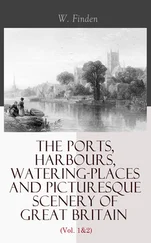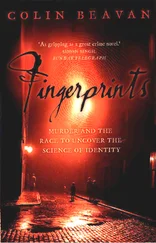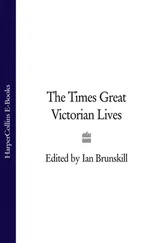In the nineteenth century the idea was gaining ground that human witness (confession or eyewitness evidence) was too subjective to be trusted. Jeremy Bentham's A Treatise on Judicial Evidence (1825), for instance, argued that testimony needed to be backed up by material proof. Only things would do: the button, the boa, the nightgown, the knife. As Waters' Inspector 'F' puts it: 'I believe that a chain of circumstantial evidence in which there shall be no material break . . . [is] the most reliable testimony upon which human judgment can be based - since a circumstance cannot be perjured, or bear corrupt testimony.' The same preference could be discerned in the fiction of Edgar Allan Poe: 'he ushers in the scientific and analytical literature in which things play a more important part than people', observed the French writers Edmond and Jules de Goncourt in 1856. Objects were incorruptible in their silence. They were mute witnesses to history, fragments - like Darwin's fossils - that could freeze the past.
Yet the Kingswood case and the Road Hill case showed up the slipperiness of things, made it clear that objects as well as memories were endlessly open to interpretation. Darwin had to decipher his fossils. Whicher had to read his murder scenes. A chain of evidence was constructed, not unearthed. Forrester's lady detective puts it simply: 'The value of the detective lies not somuch in discovering facts, as in putting them together, and finding out what they mean.' The mutilated body at Road Hill might be evidence of rage, or of the impersonation of rage. The open window could indicate an escape route, or the cunning of a killer still ensconced in the house. At Kingswood, Whicher found the most definitive kind of clue: a piece of paper bearing a name and a physical description. Even this, it turned out, could point to the opposite of what it seemed - the theft of an identity rather than identity itself.
A new mood was taking hold in England. By contrast with the vigorous, buoyant 1850s, the next decade was to be characterised by unease, self-doubt. Queen Victoria's mother died in March 1861 and her adored husband, Prince Albert, in December. The Queen went into mourning, and spent the rest of her life in black.
In the early 1860s the emotions aroused by the Road Hill murder went underground, leaving the pages of the press to reappear, disguised and intensified, in the pages of fiction. On 6 July 1861, almost exactly a year after the murder, the first instalment of Mary Elizabeth Braddon's Lady Audley's Secret appeared in Robin Goodfellow magazine. This novel, a huge bestseller when it was published in full in 1862, featured a wicked stepmother (a governess who married a gentleman), a brutal, mysterious murder at an elegant country house, a body thrust into a well; its characters were fascinated with madness and with detective work, and terrified of exposure. Braddon's story gave expression to the disquiet and excitement that Saville Kent's murder had awakened.
Constance Kent was refracted into every woman in the book: the sweet-faced, possibly insane murderess Lady Audley; the tomboyish, spirited daughter of the house, Alicia Audley; the impassive lady's maid Phoebe Marks ('Silent and self-contained, she seemed to hold herself within herself, and take no colour from the outer world . . . that is a woman who can keep a secret'); and the lonely, passionate Clara Talboys, sister to the murdered man: 'I have grown up in an atmosphere of suppression. . . . I have stifled and dwarfed the natural feelings of my heart, until they have become unnatural in their intensity; I have been allowed neither friends nor lovers. My mother died when I was very young . . . I have had no one but my brother.'
Jack Whicher surfaces in the figure of the tormented amateur detective Robert Audley, who conducts a 'backward investigation', a journey into his suspect's past. Where Inspector Bucket in Bleak House is suave, twinkling with secret knowledge, Robert Audley is racked with a guilty fear that he is insane. Who is the monomaniac, he wonders: is it the childlike woman he suspects of madness and murder, or by fixing on her is he merely proving himself in the grip of an obsessive delusion?
Was it a monition or a monomania? What if I am wrong after all? What if this chain of evidence which I have constructed link by link is constructed out of my own folly? What if this edifice of horror and suspicion is a mere collection of crochets - the nervous fancies of a hypochondriacal bachelor? . . . Oh, my God, if it should be in myself all this time that the misery lies.
Whicher's chain of evidence at Road could be proof of his suspect's guilt or of his own delusions, just as his chain of evidence at Kingswood had proved. The uncertainty was torture: 'Am I never to get any nearer the truth,' asks Robert Audley, 'but am I to be tormented all my life by vague doubts, and wretched suspicions, which may grow upon me till I become a monomaniac?' Yet if he succeeds in solving the mystery it might only magnify the horror: 'why should I try to unravel the tangled skein, to fit the pieces of the terrible puzzle, and gather together the stray fragments which when collected may make such a hideous whole?'
Lady Audley's Secret was one of the earliest and best of the 'sensation' or 'enigma' novels that dominated the 1860s literary scene, labyrinthine tales of domestic misery, deception, madness, intrigue. They dealt in what Henry James called 'those most mysterious of mysteries, the mysteries that are at our own doors . . . the terrors of the cheerful country house, or the busy London lodgings'. Their secrets were exotic, but their settings immediate - they took place in England, now, a land of telegrams, trains, policemen. The characters in these novels were at the mercy of their feelings, which pressed out, unmediated, onto their flesh: emotion compelled them to blanch, flush, darken, tremble, start, convulse, their eyes to burn and flash and dim. The books, it was feared, worked on their readers in the same way.
In 1863 the philosopher Henry Mansel described such novels as 'indications of a widespread corruption, of which they are in part both the effect and the cause: called into existence to satisfy the cravings of a diseased appetite, and contributing themselves to foster the disease, and to stimulate the want they supply'. Mansel expressed himself with unusual force, but his views were widespread. Many feared that sensation novels were a 'virus' that might create the corruption they described, forming a circle of excitement - sexual and violent - that coursed through every stratum of society. These books, the original psychological thrillers, were seen as agents of social collapse, even in the way they were consumed - they were read in the scullery and the drawing room, by servants and mistresses alike. They alluded to real crimes, such as the Road Hill case, to add a frisson of authenticity. 'There is something unspeakably disgusting in this ravenous appetite for carrion,' wrote Mansel, 'this vulture-like instinct which smells out the newest mass of social corruption, and hurries to devour the loathsome dainty before the scent has evaporated.' Sensation novels called forth their readers' brutish sensations, their animal appetites; they threatened religious belief and social order in a similar way to Darwinism. Mansel noted that the typical jacket illustration to one of these novels was of 'a pale young lady in a white dress, with a dagger in her hand' - the scene Whicher had conjured at Road.
Joseph Stapleton's book about the killing, The Great Crime of 1860, was published in May 1861, with an endorsement from Rowland Rodway. Stapleton was fantastically well-informed: he knew the suspects in the case and he had heard the local gossip. Henry Clark, the magistrates' clerk, had supplied him with information about the magistrates' inquiries and the police investigations, and Samuel Kent had briefed him on the family's history. Stapleton hinted heavily at Constance's guilt. Yet his book's tone was often frenzied and bizarre - the dark suggestions he threw out were not only about the identity of the murderer but about the decay and collapse of English society, a racial catastrophe.
Читать дальше












